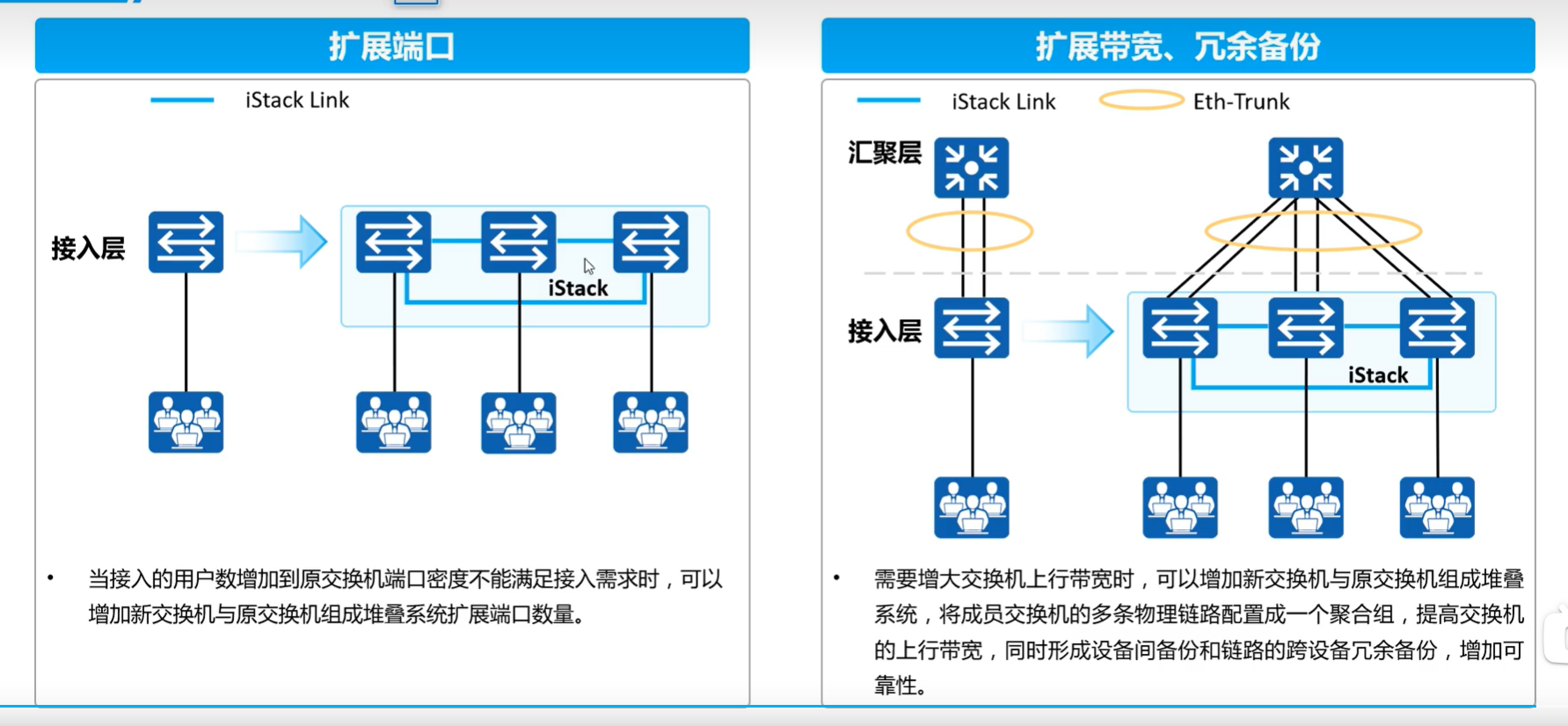网络的可靠性
- 网络的可靠性指当设备或者链路出现单点或者多点故障时保证网络服务不间断的能力
- 网络的可靠性是可以从单板、设备、链路多个层面实现。

链路聚合
以太网链路聚合: 通过将多个物理接口捆绑成为一个逻辑接口,可以再不进行硬件升级的条件下,达到增加链路带宽的目的。

链路聚合的基本术语

拓扑图
常用命令
1、 创建链路聚合组
[S1]interface Eth-Trunk trunk-id2、配置链路聚合模式,默认是手工
mode {lacp/manayal load-balance}3、将接口加入链路聚合组中(以太网接口视图)
eth-trunk trunk-id配置
##
[S1-GigabitEthernet0/0/1]eth-trunk 1##
[S1]display interface Eth-Trunk 1
Eth-Trunk1 current state : UP
Line protocol current state : UP
Description:
Switch Port, PVID : 1, Hash arithmetic : According to SIP-XOR-DIP,Maximal BW:2G, Current BW: 2G, The Maximum Frame Length is 9216
IP Sending Frames' Format is PKTFMT_ETHNT_2, Hardware address is 4c1f-cc31-0c93
Current system time: 2023-08-06 17:10:17-08:00Input bandwidth utilization : 0%Output bandwidth utilization : 0%
-----------------------------------------------------
PortName Status Weight
-----------------------------------------------------
GigabitEthernet0/0/1 UP 1
GigabitEthernet0/0/2 UP 1
-----------------------------------------------------
The Number of Ports in Trunk : 2
The Number of UP Ports in Trunk : 2### 另外一台交换机,做相同的配置即可
....应用场景
典型的应用场景1

典型的应用场景2

什么是堆叠、集群

堆叠、集群的优势

实际应用











---MAX4466声音模块)
Node.js -模块的加载机制)





的排查思路)

